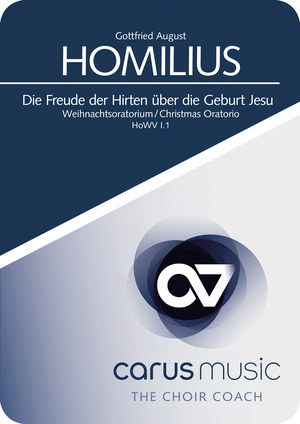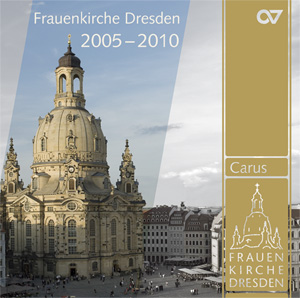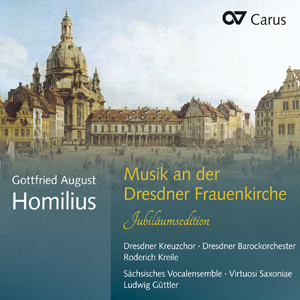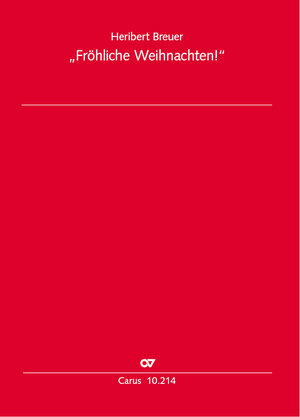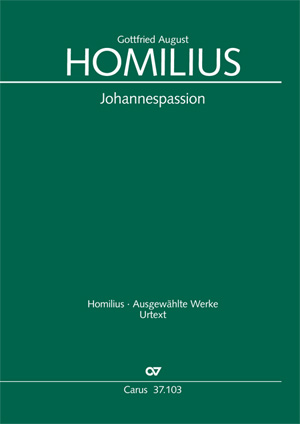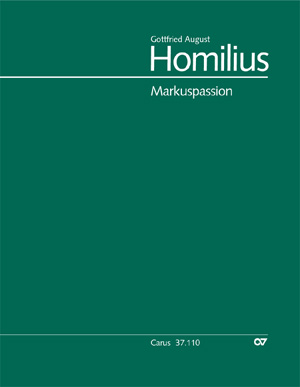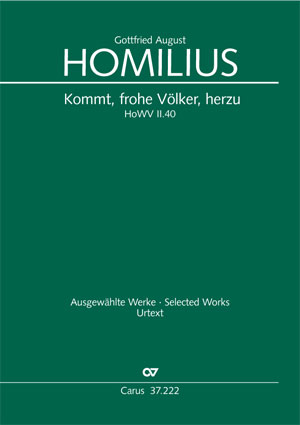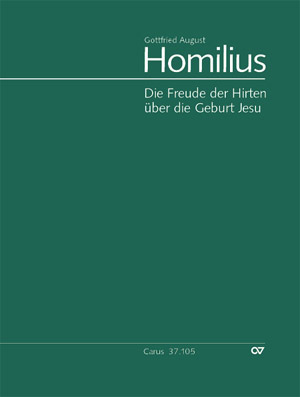
Die Freude der Hirten über die Geburt Jesu. Weihnachtsoratorium
Gott, dich rühmen unsere Lieder HoWV I.1
Contents
-
Composer
Gottfried August Homilius
| 1714-1785Gottfried August Homilius, the son of a pastor, was born in Rosenthal (Saxony) on 2 February 1714. In May 1735 he enrolled as a law student at Leipzig University. Likewise, it was probably at this time that Homilius was a pupil of Johann Sebastian Bach; the latter fact had been attested to by Johann Adam Hiller. Apart from Bach, Homilius also had contact with Johann Schneider, a Bach pupil and organist at the Nicolaikirche, for whom he also substituted. After unsuccesfully applying for a post as organist in Bautzen, Homilius was appointed organist at the Dresden Frauenkirche in 1742. In 1755 Homilius succeeded Theodor Christlieb Reinhold as Kreuzkantor and music director of the three main churches in Dresden, a position that he occupied until his death on 2 June 1785. Personal details
-
Editor
Uwe Wolf
| 1961Uwe Wolf studied musicology, history, and historical ancillary science at Tübingen and Göttingen. After receiving his doctorate in 1991 he was a research assistant at the Johann-Sebastian-Bach-Institut in Göttingen. From 2004 he worked at the Bach-Archiv Leipzig. There he directed a both research departments, was substantially responsible for the redisigning of the Bach Museum, and he developed the digital Online-Projekt Bach. Since October 2011 he has been the Chief Editor at Carus-Verlag, Stuttgart. He has taught at various universities and also belongs to the editorial boards of several complete editions. Personal details
-
Songwriter / Librettist
Ernst August Buschmann
Reviews
[...] Homilius, der u. a. Schemelli, Hiller, Reichhardt und Türk zu seinen Schülern zählte, war ein ausgesprochen beliebter Komponist, dessen Werke vielfach aufgeführt wurden. Die vorliegende, sorgfältig erstellte Urtextausgabe trägt dazu bei, dass dies auch heute wieder geschehen kann.
Musica Sacra, September/Oktober 2010
Das Weihnachtsoratorium ist - nach der Passionskantate "Ein Lämmlein geht und trägt die Schuld" von 1775 - das zweite große Vokalwerk von Homilius, das zu seinen Lebzeiten im Druck vorgelegt wurde. Mit einem ungewöhnlich großen Instrumentalapparat vertont Homilius den Text auf sehr differenzierte Weise. Jeder Satz ist ein von allen anderen deutlich unterschiedenes Stimmungsgemälde. Dazu zählen unterschiedliche Hirtenmusiken ebenso wie der als Repräsentant des mächtigen Gottes mit Trompeten und Pauken auftretende Engel. Carus setzt mit diesem Werk die Herausgabe der Werke von Homilius fort. Dieses Weihnachtsoratorium wäre eine hervorragende Alternative für Geistliche Konzerte in der Weihnachtszeit. Überlegenswert erschiene mir auch eine Kombination mit der einen oder anderen Kantate aus Bachs Weihnachtsoratorium.
- Singende Kirche 3/07 -
Frequent questions about this work
 There are no questions and answers available so far or you were unable to find an answer to your specific question about this work? Then click here and send your specific questions to our Customer Services!
There are no questions and answers available so far or you were unable to find an answer to your specific question about this work? Then click here and send your specific questions to our Customer Services!


